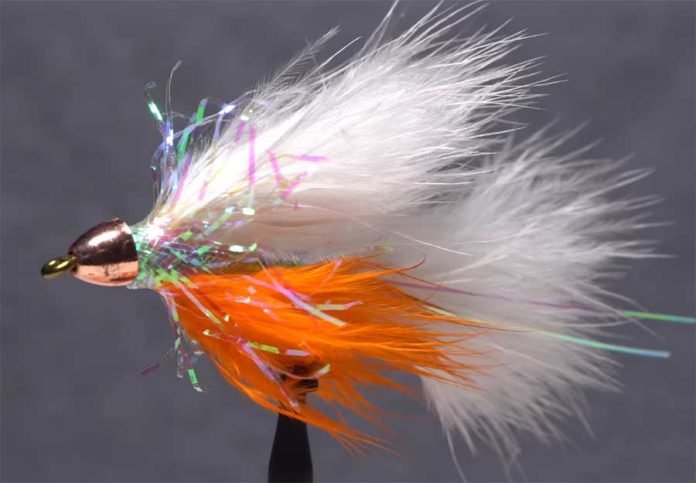Smelt are among the main forage species for many game fish that live in lake-and-river systems. Whether you’re casting for landlocked salmon, smallmouth bass, or pike, you’ll want to have a few of these bright patterns in the box. Scott Currie of Massey, Ontario, came up with this great pattern, which features plenty of action in the water, as well as flash and color.
In this week’s video from Tim Flagler of Tightline Productions, he walks you through his tying process, which features a few ingenious tricks. Adding a drop of superglue to hold the lead-free wire wraps in place saves the frustration of the wire spinning around the hook shank, wetting your marabou feathers makes them much easier to work with, and the ways that the Mylar tubing turns into both body and collars is cool as all get out.
Scotty’s McFly
Hook: 2X-heavy, 5X-long streamer hook (here a Mustad 9671), size 4.
Head: Copper tungsten cone, large.
Weight: Lead-free round wire, .020.
Adhesive #1: Superglue (here, Fly Tyer’s Z-Ment).
Thread: Fluorescent green, 6/0 or 140-denier.
Tail: White marabou.
Flash #1: Pearl Flashabou.
Underbody: Tying thread.
Overbody: Pearl Mylar cord, large.
Adhesive #2: Head cement (here, Sally Hansen Hard-As-Nails).
Wing: White marabou.
Throat: Orange marabou.
Flash #2: Pearl Flashabou.
Adhesive #3: Superglue (here, Fly Tyer’s Z-Ment).
Collar: Pearl Mylar cord, large.
Adhesive #4: Head cement (here, Sally Hansen Hard-As-Nails).
Tools: large whip-finisher, blow dryer.
Credit: Source link































